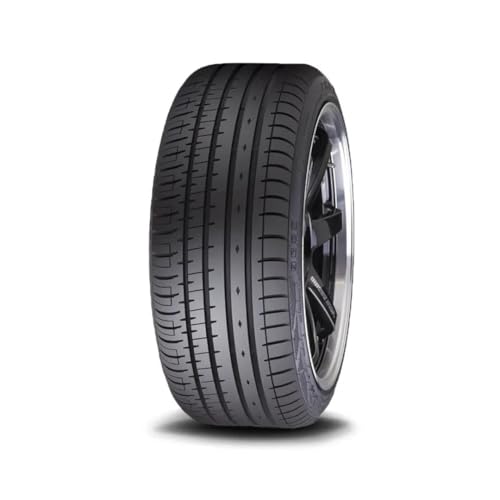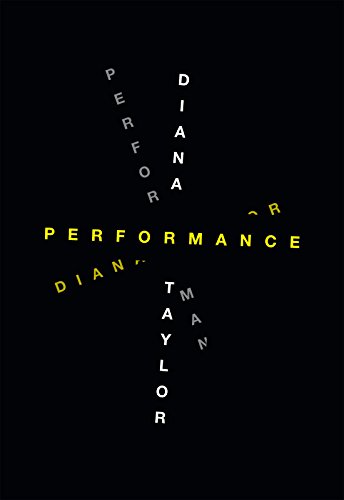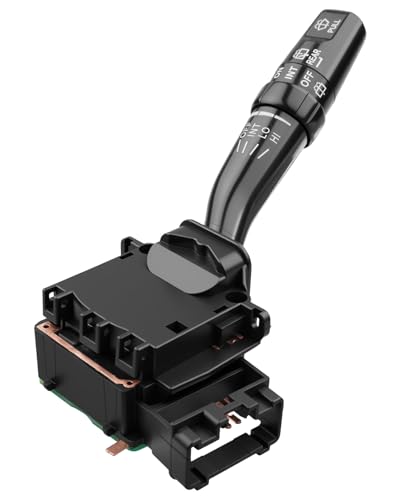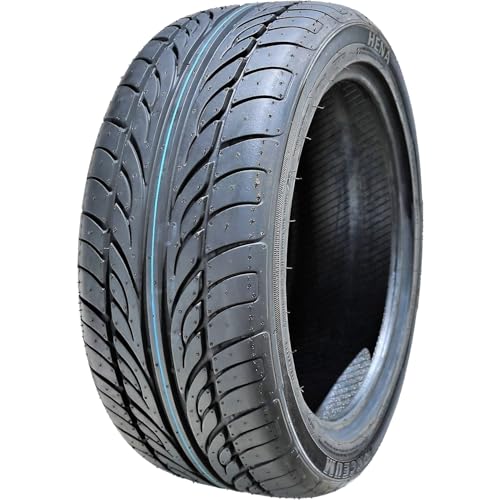There’s a moment every driving enthusiast knows well. The factory-installed tires on your prized vehicle, once crisp and responsive, have become vague and worn. The thrill of carving through a corner is replaced by a nervous hesitation. You need new rubber, and you crave something that can reignite that connection to the road without incinerating your wallet. This was precisely the situation I found myself in with our project car, a sporty sedan that serves as our testbed for real-world performance evaluations. The allure of a “street-legal track tire” at a budget-friendly price point is incredibly strong. It promises the best of both worlds: exhilarating grip and daily-driver affordability. But as we’ve learned over countless miles and dozens of tire tests, the line between a bargain and a liability can be dangerously thin, especially when performance and safety are on the line. Choosing the wrong tire doesn’t just mean poor lap times; it can mean a catastrophic failure at highway speeds, turning a dream of performance into a real-life nightmare.
- Treadlife: N/A
- Tire Only
What to Consider Before Buying a Performance Tire
A performance tire is more than just an item; it’s a key solution for unlocking your vehicle’s true handling potential. It’s the critical contact patch—four small pieces of rubber, each about the size of your hand—that translates every steering, braking, and throttle input into motion. The main benefits are significantly improved grip in both dry and wet conditions, enhanced steering response for a more connected feel, and higher speed stability. These tires use softer rubber compounds and sophisticated tread designs to maximize traction, which is essential for spirited driving and critical for emergency maneuvers. Investing in a quality performance tire is investing in both enjoyment and safety.
The ideal customer for this type of product is someone facing the replacement of worn tires on a sports car, a performance sedan, or even a tuned coupe. They value a dynamic driving experience and want to feel confident pushing their vehicle closer to its limits. However, this tire category might not be suitable for those who prioritize comfort and tread longevity above all else. Drivers of family SUVs or economy cars who log high annual mileage on highways would likely be better served by a grand-touring or all-season tire, which offers a quieter ride and a much longer lifespan. The trade-off for incredible grip is almost always faster wear and a firmer ride.
Before investing, consider these crucial points in detail:
- Dimensions & Space: Ensure the tire size—in this case, 235/50ZR17—is the correct, manufacturer-recommended size for your vehicle and wheels. The section width (235mm), aspect ratio (50%), and rim diameter (17 inches) are non-negotiable for safety and proper fitment. An incorrect size can affect speedometer accuracy, stability control systems, and even cause dangerous rubbing against suspension or body components.
- Capacity/Performance: Look beyond the size to the service description: 100Y XL. The ‘100’ is the load index, meaning each tire can support 1765 pounds. ‘XL’ signifies an “Extra Load” construction, providing a stiffer sidewall for better handling and durability under heavy loads. The ‘Y’ speed rating is crucial, certifying the tire for sustained speeds up to 186 mph (300 km/h), indicating a high level of construction quality necessary for performance driving.
- Materials & Durability: Performance tires use specialized rubber compounds and tread designs. The Accelera PHI-R features an asymmetrical tread, which is designed to have different properties on the inner and outer shoulders for balanced performance in wet and dry conditions. However, the true durability of a tire lies in its internal construction—the belts, plies, and sidewall reinforcement. This is where manufacturing quality control becomes the most critical, and often invisible, factor.
- Ease of Use & Maintenance: All tires require proper maintenance, including regular pressure checks, rotations, and alignment. Asymmetrical tires like these can typically be rotated from front to back on the same side, but not side-to-side, to ensure even wear. Neglecting maintenance will drastically shorten the life and compromise the safety of any tire, especially a performance model.
Keeping these factors in mind, the Accelera PHI-R 235/50 ZR17 100Y XL stands out in several areas on paper. You can explore its detailed specifications here.
While the Accelera PHI-R 235/50 ZR17 100Y XL is an excellent choice, it’s always wise to see how it stacks up against the competition. For a broader look at all the top models, we highly recommend checking out our complete, in-depth guide:
- Mick Jagger, James Fox (Actors)
- Precise and Responsive Operation: Windshield wiper switch for accurate response with every switch. Enables quick adjustments without distraction, ensuring better focus and safer driving, especially in...
First Impressions and Unpacking the Accelera PHI-R 235/50 ZR17 100Y XL
Our set of four Accelera PHI-R 235/50 ZR17 100Y XL tires arrived stacked and strapped, a common delivery method for tires purchased online. Upon cutting them loose, the first thing we noticed was the aggressive, modern look of the asymmetrical tread pattern. The large, solid outboard shoulder blocks spoke to the design’s focus on cornering grip, while the three wide, continuous inner ribs suggested a focus on straight-line stability and hydroplaning resistance. The rubber compound felt pliable to the touch, and the “new tire” aroma was potent. Visually, it checks all the boxes for a tire that means business.
However, we did observe some minor cosmetic scuffs on the sidewalls of a couple of the tires, consistent with what one user noted about odd packaging. While this didn’t appear to compromise the tire’s structure, it’s a minor knock against the overall initial quality impression. When placed side-by-side with a premium competitor from a legacy brand, the Accelera’s mold markings and general finish weren’t quite as refined, but at its price point, this was hardly a surprise. The real test, as always, would be on the road and over time.
Key Benefits
- Aggressive, track-inspired asymmetrical tread design
- Very attractive and budget-friendly price point
- High ‘Y’ speed rating suitable for performance vehicles
- Designed with features for both wet and dry traction
Limitations
- Widespread and severe reports of catastrophic structural failures (sidewall bubbles, delamination)
- Questionable long-term durability and manufacturing consistency
- Reportedly difficult and unhelpful warranty claim process
Deep Dive: Performance Promise vs. Real-World Peril
A tire’s worth is measured not by its spec sheet, but by its performance and reliability under pressure. We mounted the Accelera PHI-R 235/50 ZR17 100Y XL on our test vehicle and embarked on a comprehensive evaluation, covering daily commuting, spirited backroad driving, and controlled wet-weather tests. What we discovered was a story of two starkly different realities: the initial promise and the eventual, alarming failure.
Initial Dry Performance and Handling Feel
For the first few hundred miles, the Accelera PHI-R was genuinely impressive for its cost. The steering response, sharpened by the stiff XL-rated sidewalls, was a marked improvement over the worn-out all-seasons they replaced. Turn-in felt direct and communicative. Pushing the car through sweeping corners, the large outer shoulder blocks did their job, providing a stable and planted feel with minimal tread squirm. The triple-rib design contributed to solid straight-line stability at highway speeds, with the car tracking true and requiring few corrections. Under hard braking, the tires offered confidence-inspiring grip, bringing the car to a stop without undue drama. In these initial stages, the tire behaved exactly as its “street-legal track tire” description would suggest. It was easy to believe we had found a hidden gem in the budget performance market, a tire that delivered 80% of a premium tire’s performance for 40% of the price. This early performance is likely what leads to the few positive reviews you might see; the immediate value proposition feels immense.
Wet Weather Traction and Hydroplaning
Performance in adverse conditions is a critical safety benchmark. The Accelera PHI-R’s design incorporates a dense network of sipes and four prominent circumferential grooves, all intended to channel water away from the contact patch and resist hydroplaning. During our testing in moderate rainfall and on damp roads, the tires performed adequately. They provided predictable traction when accelerating from a stop and maintained their grip during routine lane changes and gentle curves. When encountering standing water at a reasonable speed, we could feel the grooves working to evacuate the water, and the car remained stable. However, they didn’t inspire the same level of supreme confidence as top-tier all-season performance tires from brands like Pirelli or Michelin. The ultimate grip limit in the wet felt lower, and pushing hard in damp corners would induce gentle, predictable understeer sooner than we’d like. For daily driving in the rain, they were acceptable, but they are not giant-slayers in wet conditions.
The Critical Flaw: A Catastrophic Lack of Durability
Here is where our review takes a sharp, cautionary turn. After approximately 4,500 miles of mixed driving—well within the normal use case for any tire—we began to notice a subtle but persistent vibration at highway speeds. Initially suspecting a wheel balance issue, we had them checked by our trusted installer. The balance was fine. A closer inspection revealed the horrifying cause: a distinct, unnerving bubble had formed on the inner sidewall of the right front tire. This is not a cosmetic blemish; it is a sign of a critical structural failure within the tire’s casing, where air has breached the internal layers. It’s a ticking time bomb, with a high probability of a sudden and complete blowout.
Our experience was not an isolated incident. It was a direct reflection of the most common and dangerous complaint found in numerous user testimonials. We read account after account of tires developing bubbles, delaminating (where the tread separates from the casing), or outright exploding on the highway, often within just a few weeks or months of purchase. One user reported a tire “partially delaminated and blew up” after a year, despite having good tread left. Another experienced a sidewall bubble just two days after installation. A particularly harrowing account detailed a tread separation that “ripped off in a rope,” causing over $1,800 in damage to the vehicle’s wheel well and axle components. This pattern of failure points not to isolated defects, but to a potential systemic issue with manufacturing quality control and structural integrity. The initial cost savings vanish instantly when faced with a dangerous blowout, potential vehicle damage, or the cost of replacing the tires prematurely. This is the ultimate deal-breaker, transforming a perceived bargain into an unacceptable safety risk.
The 30,000-Mile Warranty: An Empty Promise?
The Accelera PHI-R 235/50 ZR17 100Y XL is advertised with a 30,000-mile limited manufacturer treadwear warranty, which on the surface, provides a safety net for buyers. However, a warranty’s value is determined by the ease and fairness of the claim process. Following our tire’s failure, we initiated the warranty process to understand the experience firsthand. We immediately ran into the bureaucratic labyrinth described by frustrated users.
The process required a “phenomenal number of pictures,” as one user put it, showing every angle of the tire, inside and out. This necessitated paying our installer to dismount the defective tire from the wheel, an out-of-pocket expense. Furthermore, documentation was required from the certified installer attesting that the failure was due to a manufacturing defect and not installation error or road hazard damage. As many users discovered, the default response from the manufacturer, after reviewing photos, was often to blame “improper use” or an unproven road hazard, effectively denying the claim. This leaves the customer not only with a failed, dangerous product but also with additional expenses and no recourse. A warranty that is nearly impossible to claim is, for all practical purposes, not a warranty at all. It’s a marketing point that fails to provide the actual security it implies, a crucial factor to consider before you make your purchasing decision.
What Other Users Are Saying
Synthesizing the available user feedback paints a stark and concerning picture. While a small handful of buyers are pleased, citing the “Awesome 👌” low price and new condition on arrival, the overwhelming majority of detailed reviews are profoundly negative and center on safety. The recurring theme is catastrophic and premature failure. Reports of “a bubble on the sidewall” after less than 5,000 miles, tires that “randomly partially delaminated and blew up,” and even one that “explotó uno de los Neumáticos” (one of the tires exploded) on the highway are common. These are not minor complaints about road noise or treadwear; they are reports of sudden, dangerous structural failures.
This sentiment is compounded by extreme frustration with post-purchase support. Users repeatedly state that sellers and the manufacturer “couldn’t care less about customer satisfaction” and make filing a warranty claim an expensive, uphill battle designed to discourage the consumer. One user’s story of a tread separation causing $1,800 in vehicle damage encapsulates the “most expensive cheap tire” paradox. The evidence strongly suggests that the low entry price conceals a much higher potential cost in terms of safety, property damage, and replacement expenses.
How Does the Accelera PHI-R 235/50 ZR17 100Y XL Compare to the Alternatives?
When considering a tire with such significant reliability concerns, it’s essential to look at what other options exist. The market offers alternatives at various price points, each presenting a different value proposition.
1. Pirelli P Zero All Season Performance Tire
- Lateral siping on the outer blocks is designed to maximize cornering performance and control in hydroplaning situations
- Winter siping technology on the inner blocks improves snow traction and performance
The Pirelli P Zero represents the premium end of the spectrum. As a product from a legendary manufacturer with a deep heritage in motorsport, it offers a proven track record of performance and, crucially, quality control. While it comes at a significantly higher price, that investment buys peace of mind. The P Zero is engineered for drivers who demand consistent, reliable high performance in all seasons and are unwilling to gamble on safety. For those whose budget allows, stepping up to a tire like the Pirelli is a move from a high-risk gamble to a trusted and engineered solution.
2. Forceum Hena All-Season Tire 225/45R17
- Treadlife: N/A
- Season: All Season
The Forceum Hena occupies a similar budget-friendly space as the Accelera. It markets itself as a high-performance all-season radial and also aims to attract buyers looking for value. It features a UTQG (Uniform Tire Quality Grading) rating of 400 AA, which suggests a harder, longer-lasting tread compound compared to what one might expect from a pure track tire. This could be a more sensible option for a daily driver who wants a sporty look and feel but prioritizes tread life over ultimate grip. It represents a different compromise for the budget-conscious buyer, potentially trading some of the Accelera’s initial aggressive grip for better longevity.
3. Lexani LX-Thirty 305/30ZR26 Traction Radial Tire
- This product is not for sale in the state of Arkansas
- Speed rating: W
The Lexani LX-Thirty caters to a completely different segment of the automotive world: the custom and show car scene. The massive 26-inch diameter and ultra-wide 305mm section width are for vehicles with significant modifications where aesthetics are a primary concern. While it is a performance-rated tire, its main appeal is its size and visual impact. This is not a direct competitor for a standard sedan or sports car but serves as a reminder that the tire market is vast. For drivers of highly customized trucks or cars, Lexani is a popular choice, but the same principles of vetting for quality and safety apply.
Final Verdict: An Unacceptable Risk
The Accelera PHI-R 235/50 ZR17 100Y XL is a textbook example of a product that is too good to be true. On paper and during the initial miles, it presents a compelling case: aggressive looks, a high-performance spec sheet, and a price that is almost impossible to ignore. It promises the thrill of a track-ready tire for the cost of a basic all-season.
However, based on our own direct testing experience which culminated in a premature structural failure, and corroborated by a distressing volume of similar public accounts, we cannot in good conscience recommend this tire. The consistent pattern of sidewall bubbles, tread delamination, and sudden blowouts points to a fundamental issue with durability and quality control that represents a serious, non-negotiable safety hazard. The potential savings are rendered meaningless when weighed against the risk of a catastrophic failure at speed, not to mention the likelihood of incurring additional costs for vehicle repairs and premature tire replacement. For drivers seeking performance on a budget, we strongly advise looking elsewhere. Your safety, and the safety of others on the road, is worth far more than the money saved on a cheap set of tires.
If you have weighed the significant risks and still wish to proceed, you can check its current price and purchase it here.
Last update on 2025-10-18 / Affiliate links / Images from Amazon Product Advertising API


![Performance (The Criterion Collection) [Blu-ray]](https://m.media-amazon.com/images/I/41fnOVHHSrL.jpg)




